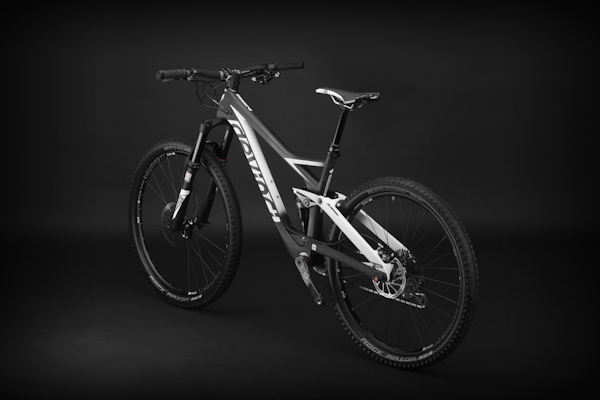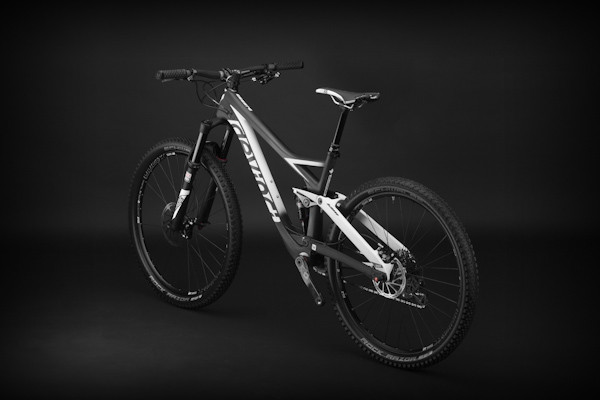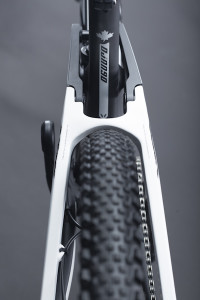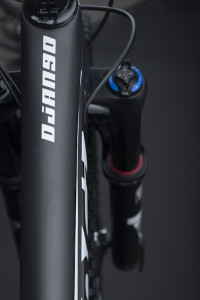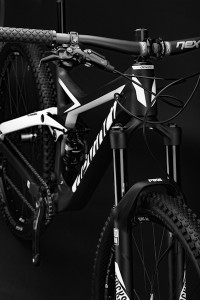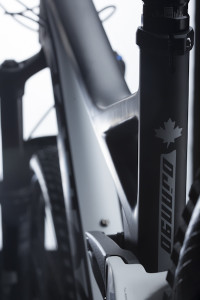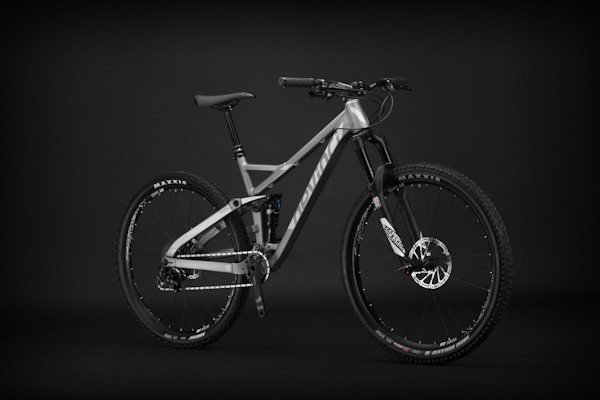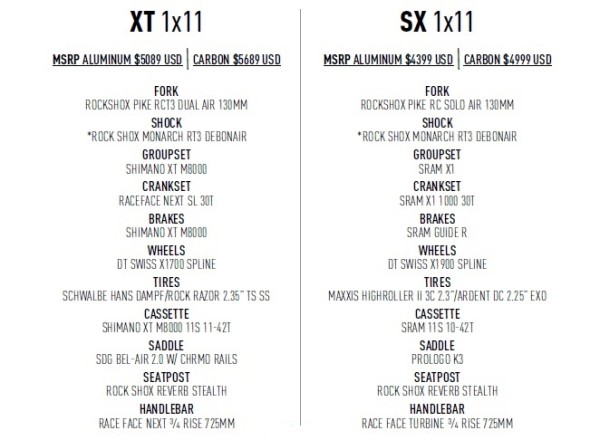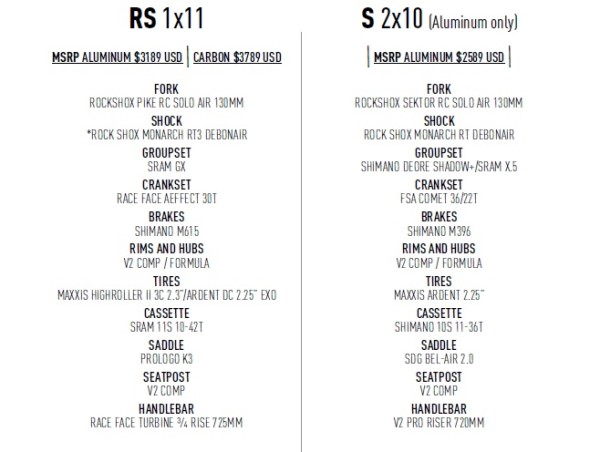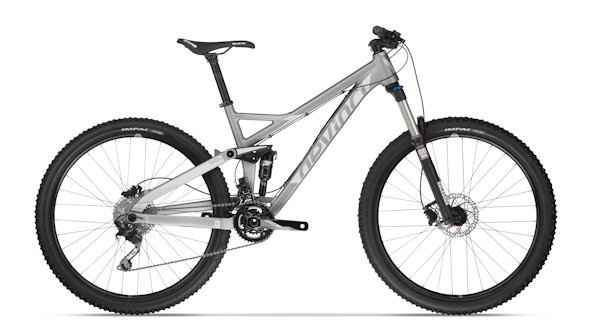“Climbs like an XC bike, descends like a DH” is becoming pretty cliché already, but these days that’s what every company wants you to think about their all-mountain/enduro/trail bike. As the industry moves towards shorter travel do-everything bikes the onus is on the designers to do more with less, and somehow maintain the fun and versatility of a bigger bike while shedding the bulk of yesteryear.
With 120mm of rear travel the new Devinci Django is on the shorter end of that spectrum. You probably shouldn’t expect it to ‘descend like a DH’ but it was designed to feel more plush than the numbers would suggest and is complemented with modern geometry to ensure a stable, yet fun and flickable ride.
The Django follows the same principles as today’s trail bikes but in a smaller, lighter overall package. In short, this bike is aimed at riders looking to keep their pace up on the climbs as well as the descents. The Django will be sold in carbon or aluminum with a range of different component specs available for each…
The Django uses Devinci’s split-pivot suspension platform offering 120mm of rear travel, and all models are mated to longer 130mm forks for a bit of extra squish up front. The bike rolls on 27.5” wheels and has clearance for tires up to 2.35” wide. Its stubby 425mm chainstays utilize Boost 148 rear spacing. The carbon frames feature internal cable routing, whereas the aluminum models are mostly external save for the derailleur cable running through the chainstay. It appears Devinci has stuck with aluminum chainstays for the carbon frames.
All frame geometry is identical between the carbon and aluminum models, and is adjustable to either a Hi or Lo setting. The Lo setting slacks out the head angle by a half degree from 68° to 67.5°, leans the seat tube back from 75° to 74.5°, and drops the BB height from 340mm to 334mm. The frames come in S-XL sizes, and a medium frame’s top tube measures in at 598mm. Now let’s take a look at build specs…
The XT is the highest end build with some top-tier components like RockShox’s Pike RCT3 Dual Air fork and Monarch RT3 Debonair rear shock, a Shimano XT 1×11 drivetrain, Race Face Next SL cranks, DT Swiss wheels and a Rockshox Reverb Stealth dropper post. The SX model runs a Pike RC Solo Air fork, a Monarch RT3 Debonair and switches to Sram X1 for the drivetrain components. Please note the prices are shown in USD for both carbon and aluminum models.
The RS steps things down to a lower price point, employing Sram’s GX 1×11 drivetrain components, Race Face’s Aeffect cranks, and a fixed seatpost. Suspension is still handled by Rockshox, with the same setup as the SX model above on the carbon bike (aluminum RS models get a Monarch RT Debonair rear shock).
The S is the only Django model that is not offered in carbon. Its aluminum frame rides on Rockshox’s Sektor RC Solo Air fork and Monarch RT Debonair rear shock, and utilizes components like a Shimano Deore/Sram X5 2×10 drivetrain, FSA Comet cranks, and a non-dropper seatpost to accommodate its entry level price tag.
Django framesets are also available, with the carbon version selling for $2239 and the aluminum model for $1639. The complete carbon bikes come in Matte Black/White, and aluminum in Grey/Charcoal. The Django is available at Devinci dealers now.
